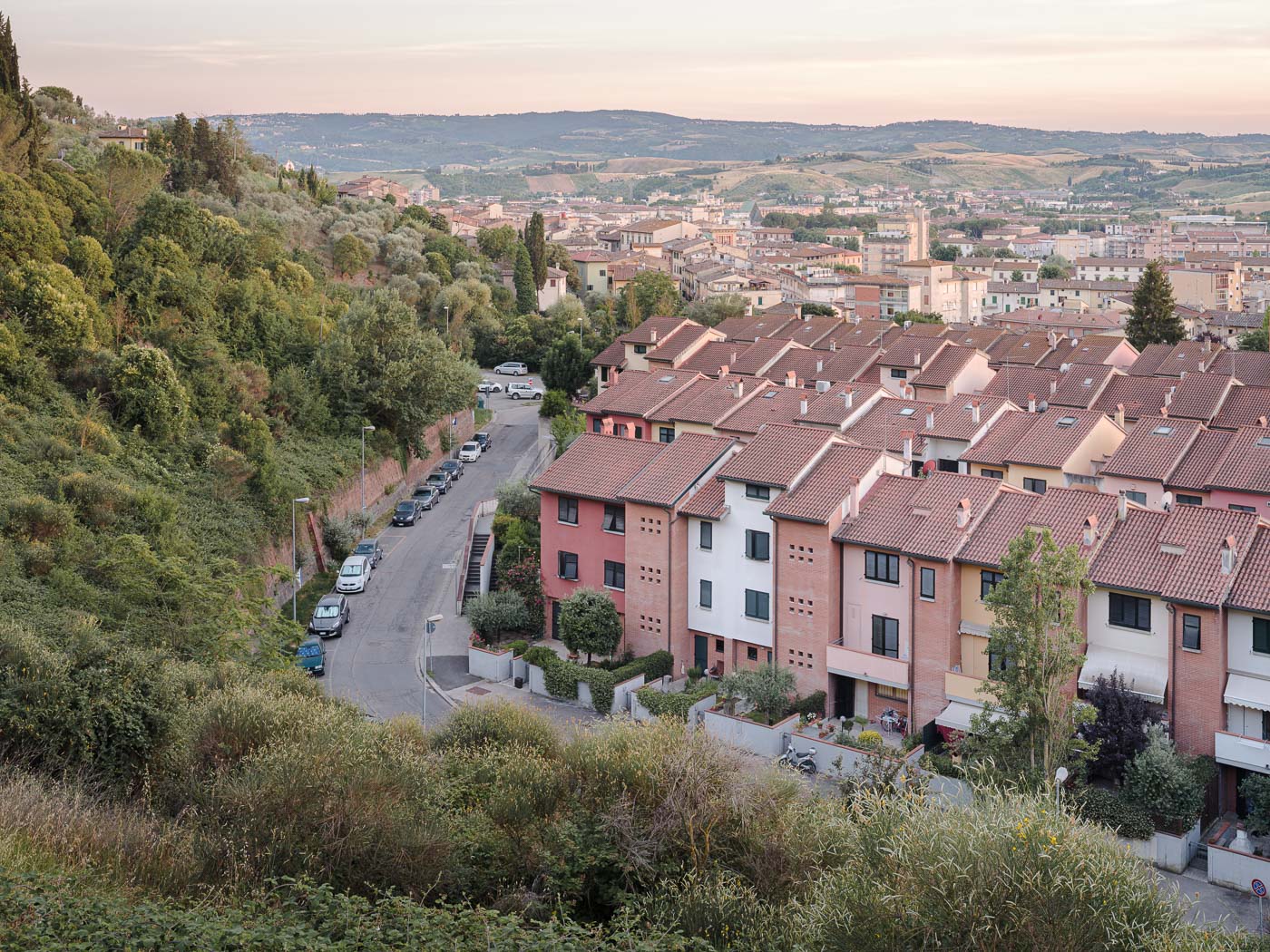
The memory of the present
A photoessay that documents a different side of Tuscany, where the overlooked spreads and defies the resistance of an apparently immutable landscape. Diving into the mundane, photographer Lorenzo Valloriani tries to capture and celebrate the unnoticed that flows in the undercurrents of the land.
I am lucky to live in a region in which the furthest village is a two-hour drive from home. In the last two years, I have travelled many kilometres, covering fifty locations spread across all 10 provinces. In Tuscany, we are a fleeting presence in an almost unchangeable landscape – a “humanist” landscape made from artefacts, landmarks and other monuments to human wisdom and agency.
These are the fragments of a world that have accumulated over the course of centuries, and are so ingrained that they have turned this land into something that we all share as a collective image. An almost untouched, perpetually verdant territory, caressed by rolling hills and rows of cypress trees or turreted cities, forever set in time and, as such, a magnet for tourists.
Yet the areas I explore are marginal to this shared epicentres. Here, there is nothing that may remind one of the most classic characteristics of Da Vinci’s homeland. I visit places that are neither city nor countryside, hybrid places, undefined and in the making. They have emerged from that disordered urbanisation which has been developing over the past 70 years.

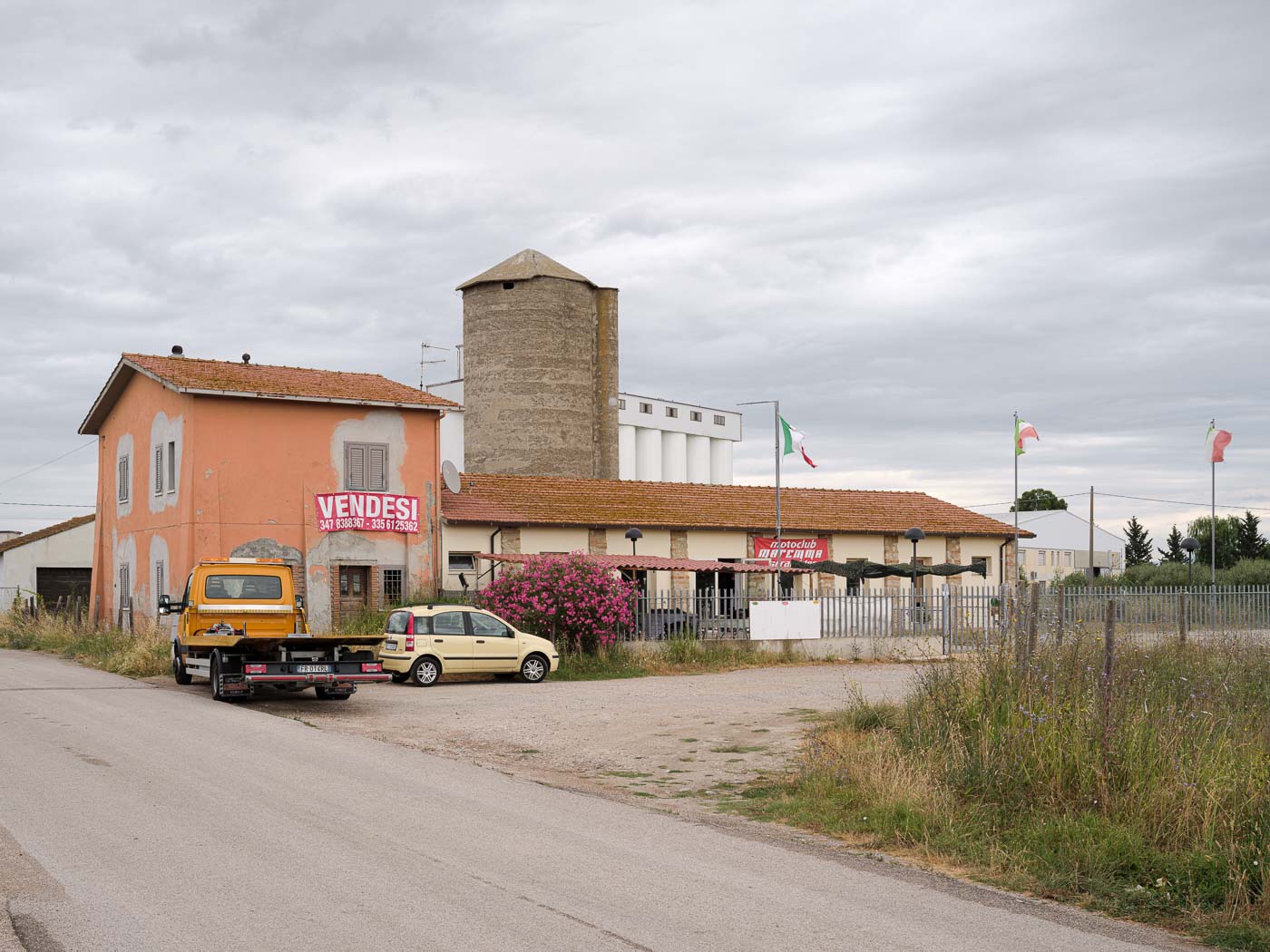
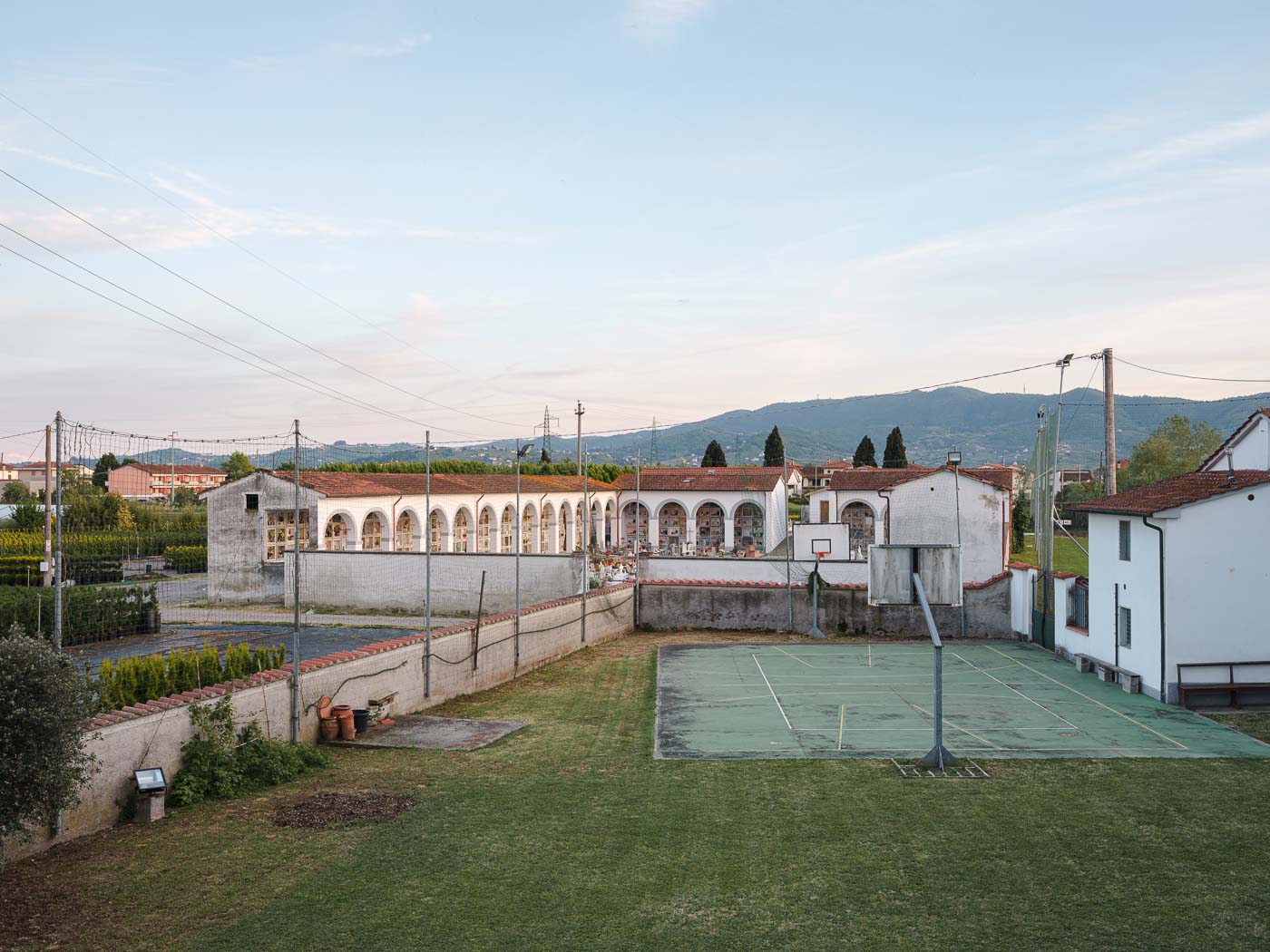
The landscape consists of anonymous architecture, provincial roads, industrial sheds, crossroads, light poles, votive shrines, monuments to the fallen, and stream banks, all merging into a hazy image. Although the situation is different for the hilly and mountainous areas, which maintain a greater separation between one centre and another, the suburbs keep expanding, connecting without apparent logic to industrial areas, like liquid rushing over the land.
Few are the iconic stable points of the landscape. These are often represented by meeting-places, amongst which churches stand out. Much like the rest of Italy, they are one of the recurring elements of the landscape, and seem to quietly interrupt the flux of suburbia. A survey carried out by the regional council of Tuscany in the late 1990s states that religious buildings amounted to around 2,500. There is hardly an urban cluster that does not include a church, testifying to the capillarity with which they have spread. Furthermore, having been built or restored in every century since the Middle Ages, they are both evidence of the stratification of time in space, as well as the change in taste and construction criteria.

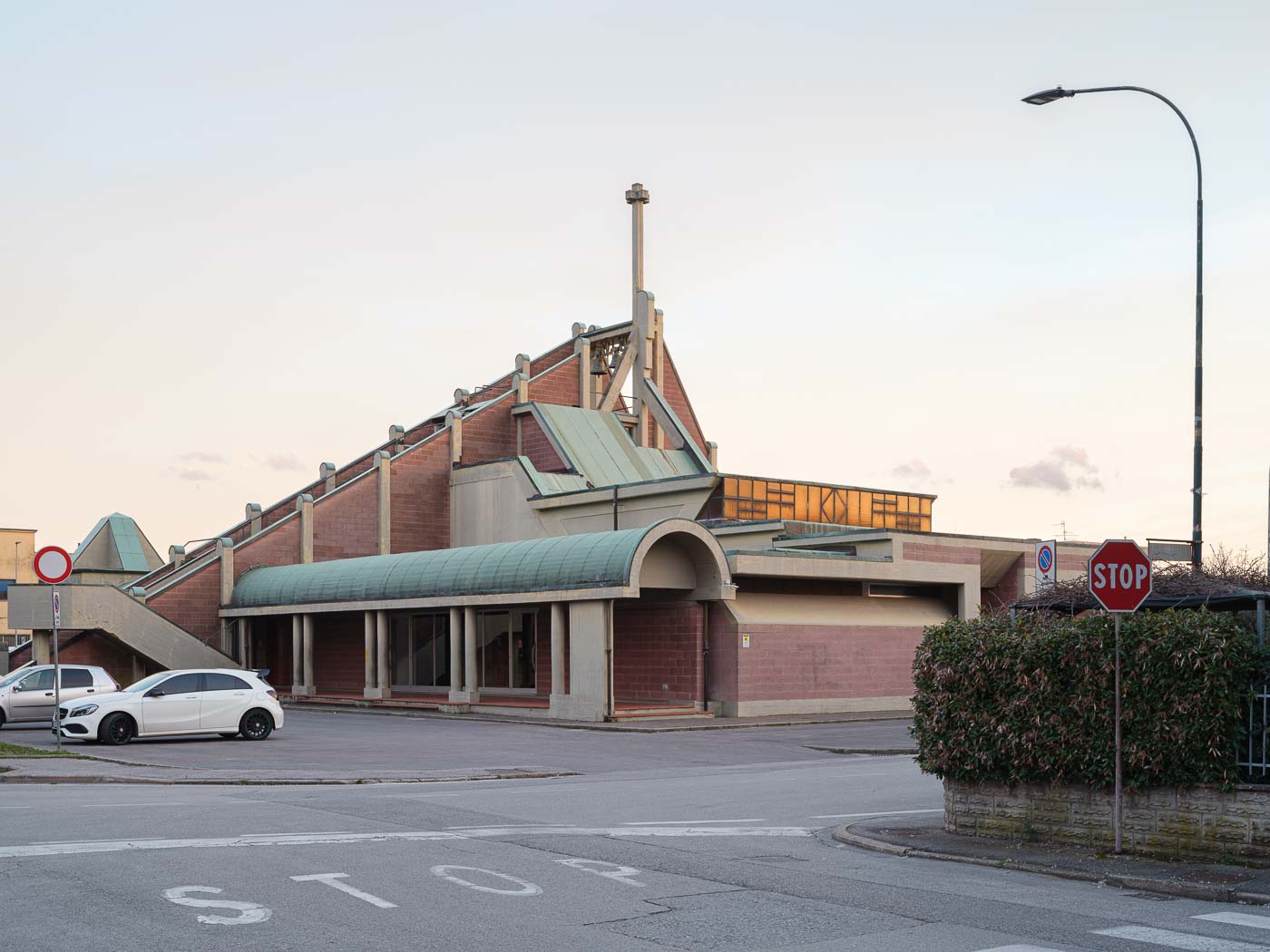

Residential houses further punctuate the skin of the land. These were often buildings constructed for other purposes at the beginning of the twentieth century, in the midst of the fascist regime, and were later converted into housing after the war. In other cases, they are much more recent, emerging from the construction boom of the 1960s and 1970s.
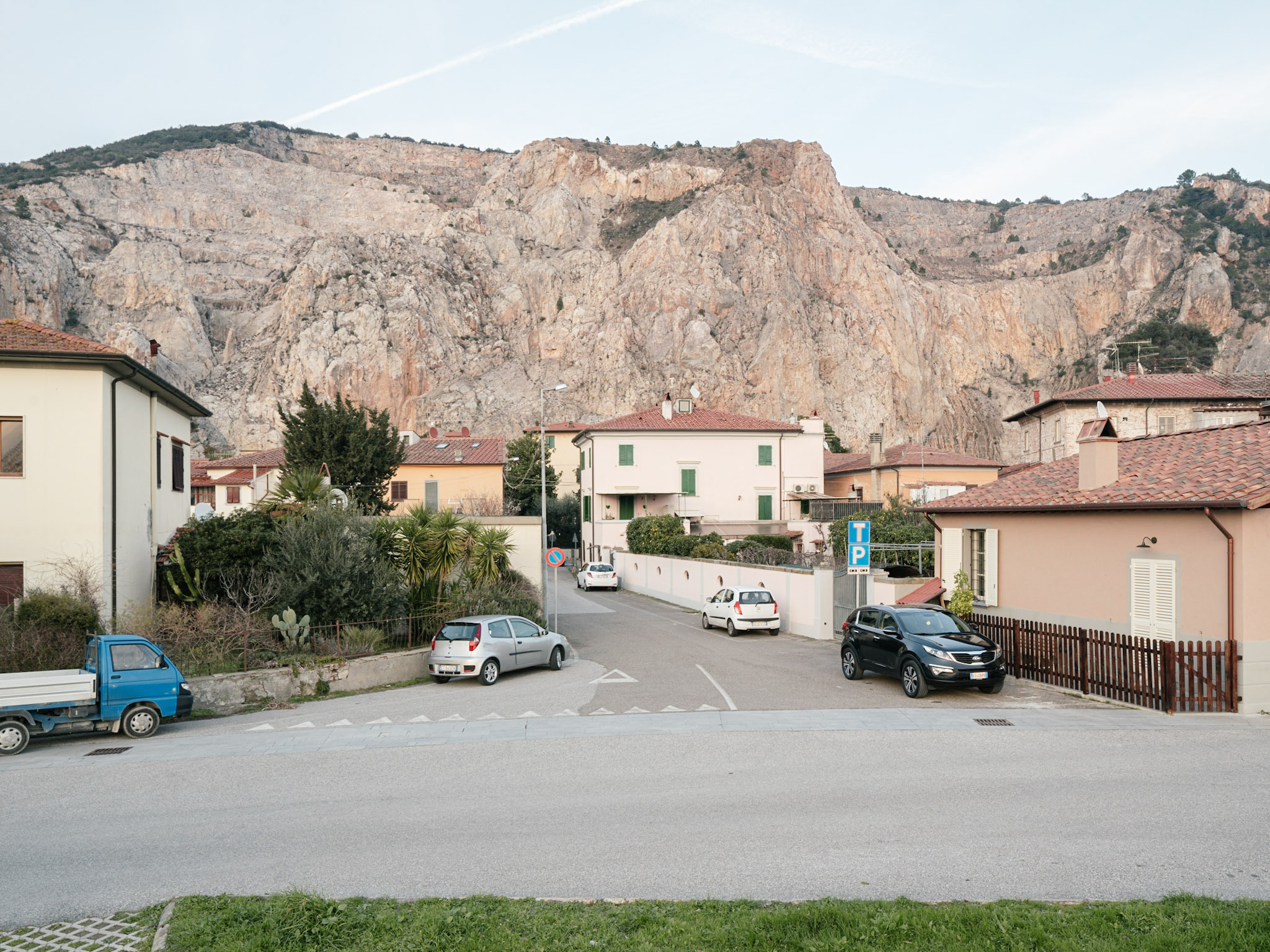



Many brick factory chimneys, most of which are no longer in operation, also constitute the backdrop of both small and larger towns. They bear witness to the way in which this apparently untouchable landscape, in fact, underwent a radical change that began more than a century ago.

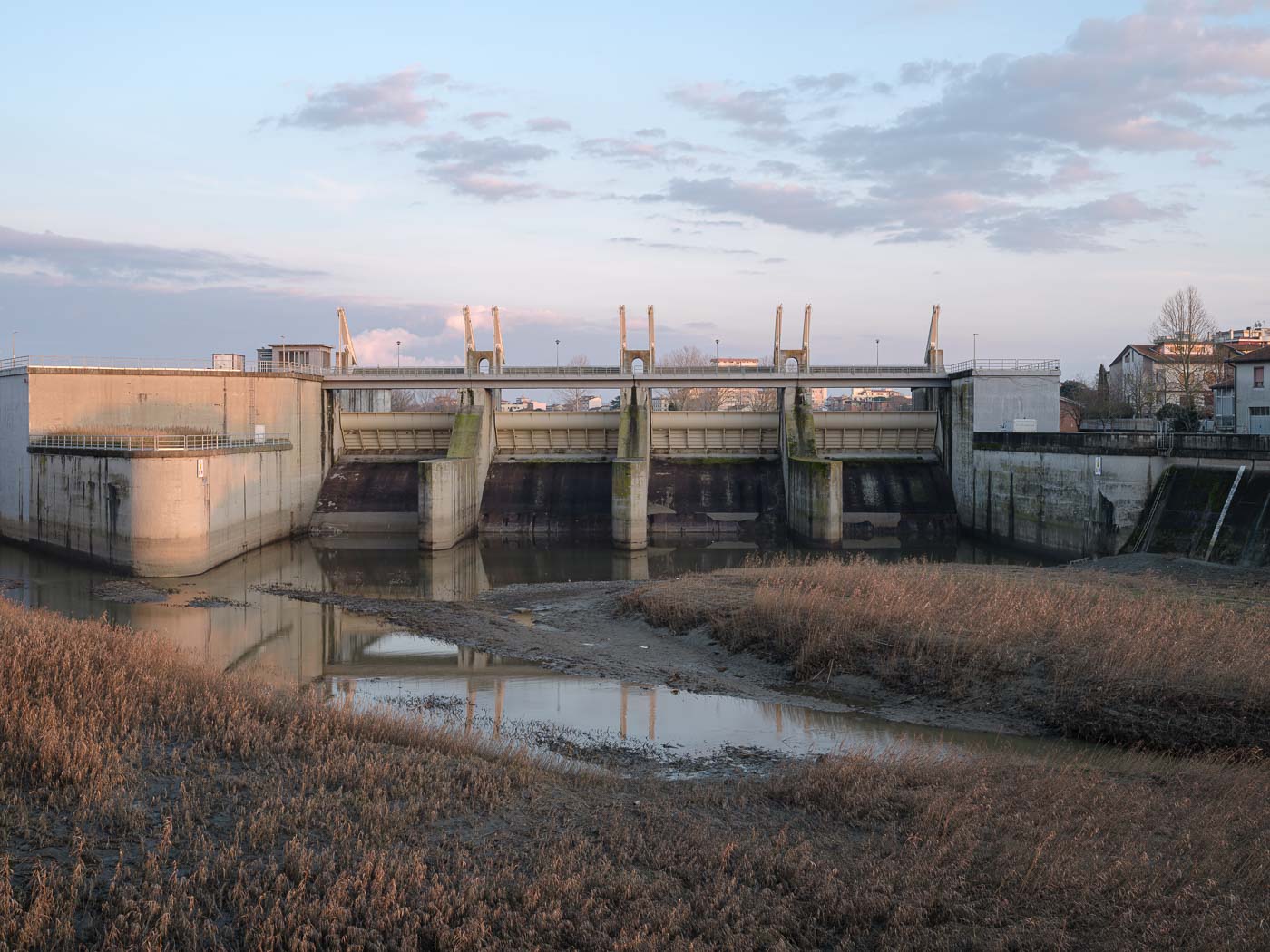
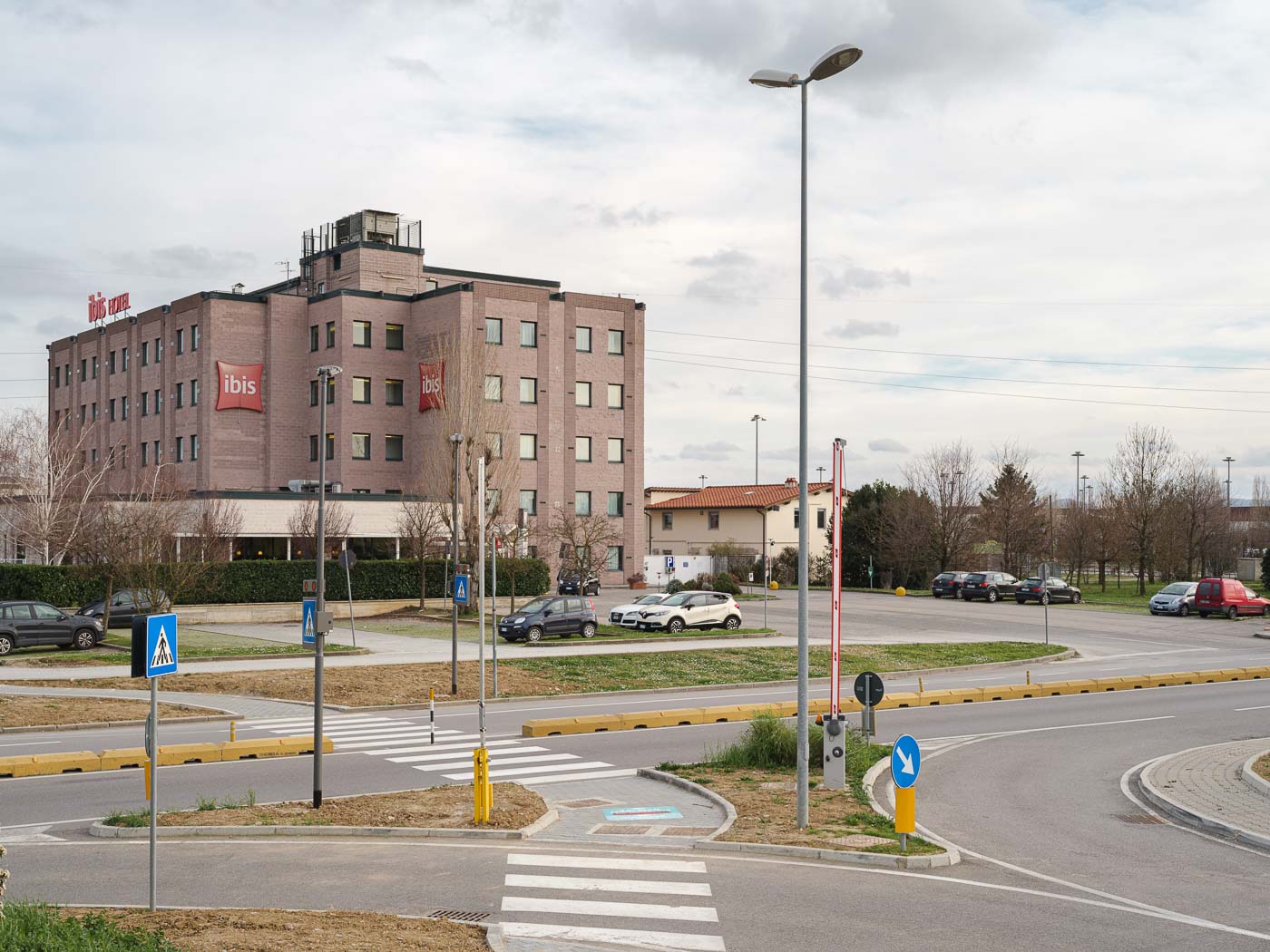
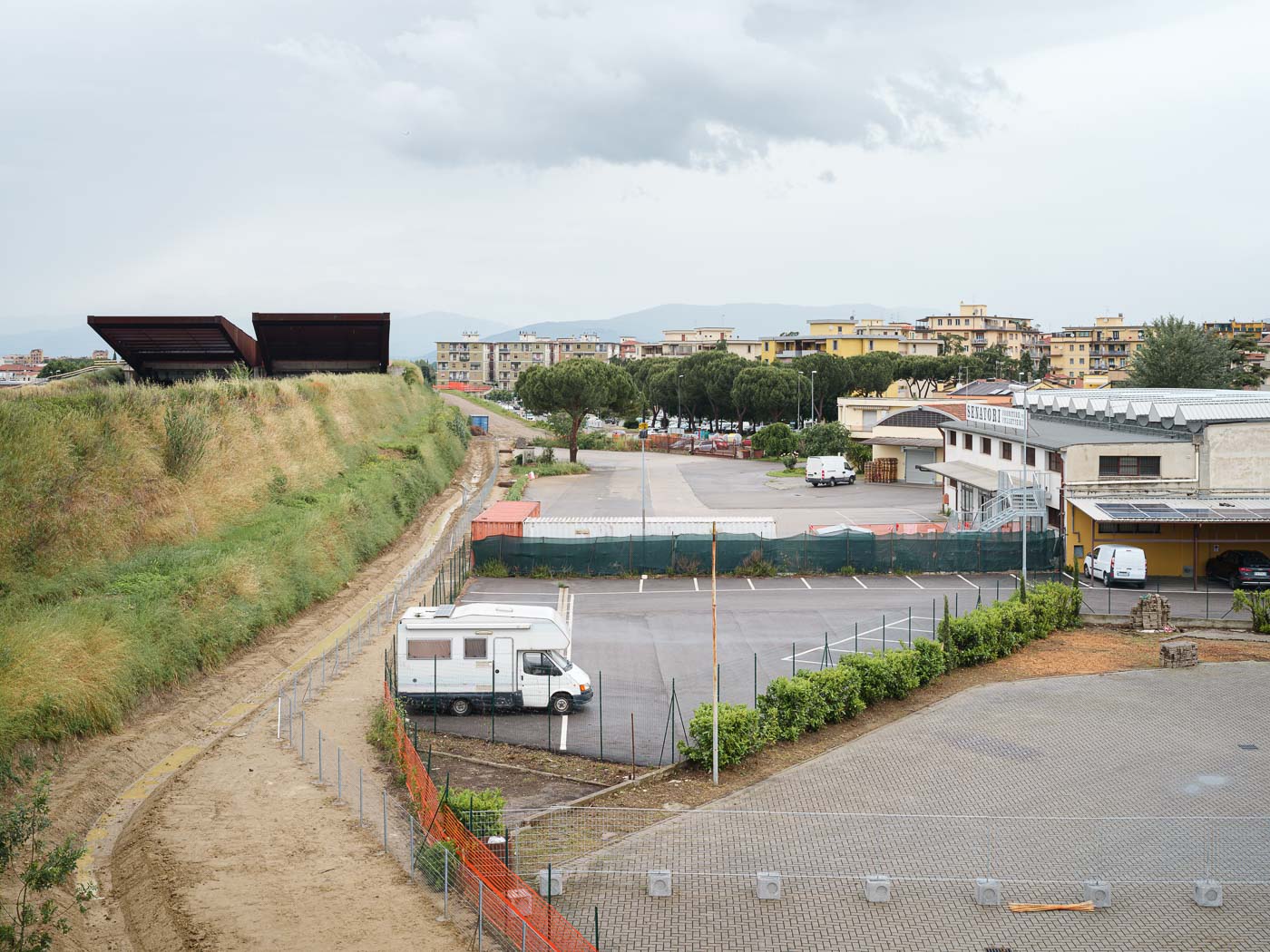
Usually, when we encounter this type of territory, more vernacular and in need of our gaze, we deactivate the attention and the ability to establish a relationship with the surroundings.
Not by chance, I decided to name this photography series “The memory of the present”. The aesthetic of these places is the one that passes you by on a short drive to and from work. They are seen and forgotten at the same time, becoming shelved in one’s memory. Yet, they have agency. Despite the fact that they do not correspond with the official image of Tuscany, they do exist and pulsate. They remind us that this landscape is not so stable, it is a land in flux, and has been for a while. Like a déja-vu, we may not be able to pinpoint where, and from which moment in time, these images come from, yet they make us question the stability and reliability of the present image of our land.
Recent articles

Southern California is many things. Quite infamously, it is known as a landscape defined by the automobile, from the emergence and diffusion of the highway system to fast food burgers, and the suburbanization of the United States. Walking this place then, would seem not only inconvenient, but ill advised. In… Read more »

What is today known as ‘whistleblowing’ could once take the form of interacting with a threatening gaze carved into the city wall. It is the case of the ‘boche de Leon’ or ‘lion’s mouths’ disseminated by the old Venetian Republic throughout its territory to suppress illegal activities. Through a close… Read more »

As he navigates through the recurrent lockdowns of the pandemic, stranded between hitchiking and muggings, job hunting and separations, Fabio Valerio Tibollo rediscovers photography as a powerful coping mechanism. Recording everything that happened around him for one year straight, from attending momentous events to finding curiosity in shots of simple living,… Read more »

